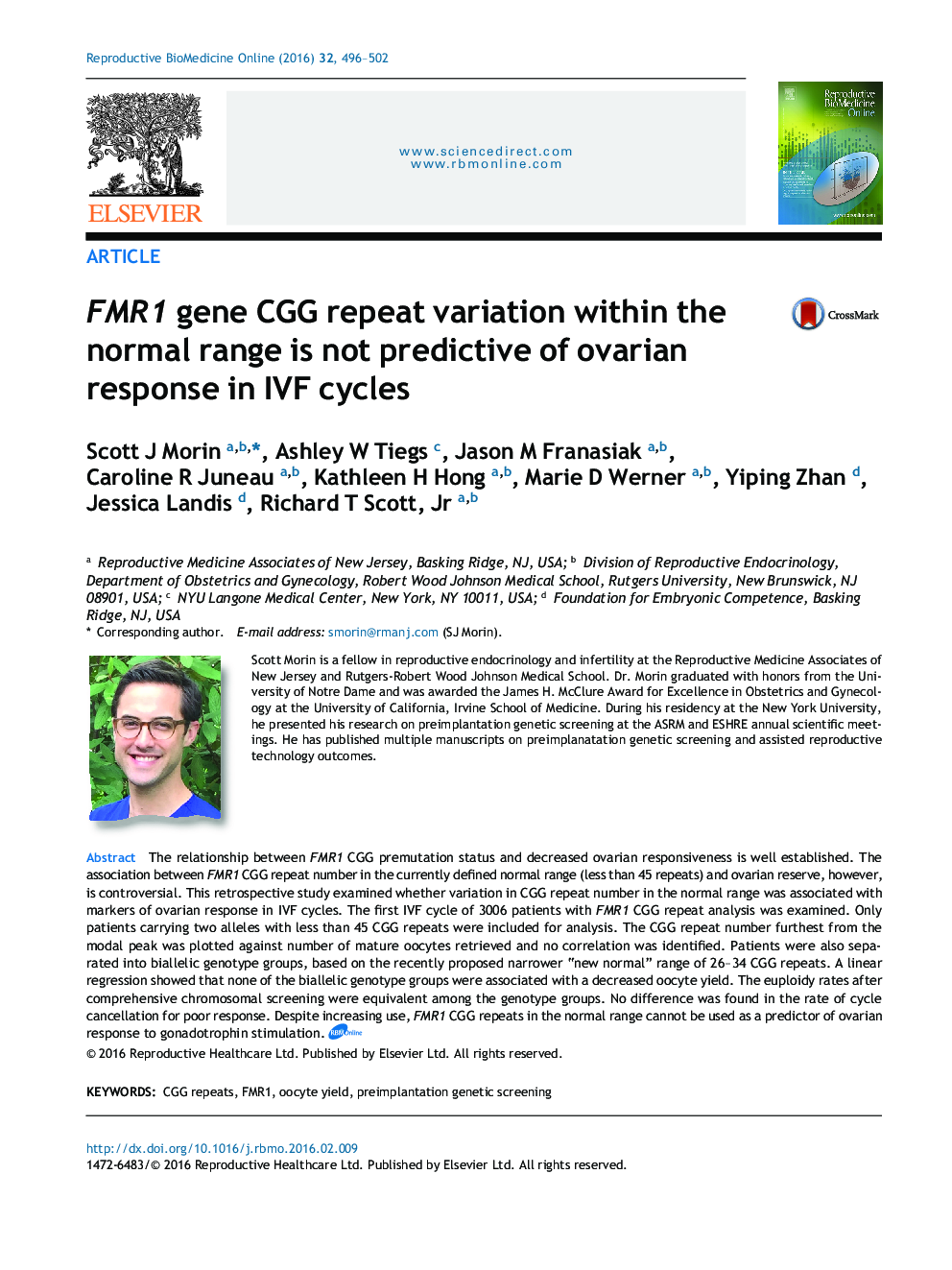| Article ID | Journal | Published Year | Pages | File Type |
|---|---|---|---|---|
| 6188659 | Reproductive BioMedicine Online | 2016 | 7 Pages |
The relationship between FMR1 CGG premutation status and decreased ovarian responsiveness is well established. The association between FMR1 CGG repeat number in the currently defined normal range (less than 45 repeats) and ovarian reserve, however, is controversial. This retrospective study examined whether variation in CGG repeat number in the normal range was associated with markers of ovarian response in IVF cycles. The first IVF cycle of 3006 patients with FMR1 CGG repeat analysis was examined. Only patients carrying two alleles with less than 45 CGG repeats were included for analysis. The CGG repeat number furthest from the modal peak was plotted against number of mature oocytes retrieved and no correlation was identified. Patients were also separated into biallelic genotype groups, based on the recently proposed narrower “new normal” range of 26-34 CGG repeats. A linear regression showed that none of the biallelic genotype groups were associated with a decreased oocyte yield. The euploidy rates after comprehensive chromosomal screening were equivalent among the genotype groups. No difference was found in the rate of cycle cancellation for poor response. Despite increasing use, FMR1 CGG repeats in the normal range cannot be used as a predictor of ovarian response to gonadotrophin stimulation.
